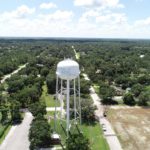INDIAN RIVER COUNTY — Senator Bill Nelson’s office has confirmed that Indian River County remains a possibility as one of the stops for a high-speed rail system that initially would connect Tampa with Orlando and, later, Miami.
The senator announced the U.S. Department of Transportation will award $800 million of stimulus money toward the first leg of the project that would link Tampa and Orlando. The state has already received $1.25 billion in federal money toward the bullet train service. Nelson’s office also said the Department of Transportation had notified Congress of its intention to award an $8 million grant to continue planning for the second phase of the high-speed rail project to run from Orlando to Miami. That leg includes the possibility of an “I-95” system that will run east from Orlando to Cocoa/Port Canaveral and south down the Space and Treasure coasts, including the Vero Beach stop.
The Florida Department of Transportation has already allotted $2 million and says it will take 30 months to evaluate the costs and environmental impact of creating an Orlando-Miami corridor. FDOT is also considering a “Turnpike” grid that would run south from the Orlando Airport to Fort Pierce, skipping Vero Beach, and then run down the east coast of Florida to Miami.
The trains are projected to reach speeds of 220 miles per hour when they begin travelling south down the coast.
The state is still short of funding for the Tampa-Orlando leg, but could receive the final federal installment of $300 million next year and would need to come up with $250 million to complete payment for the $2.6 billion project.
“This is fantastic news for Florida,” said Sen. Nelson. “This will ensure the state remains full speed ahead with high-speed rail construction. As I’ve said many times, high-speed rail will be a game changer for Florida’s economy, along the likes of the Interstate system and Disney.”
Officials project that the 84-mile Tampa-Orlando link will be completed in 2015 and a normal trip with stops could take 55 minutes.






